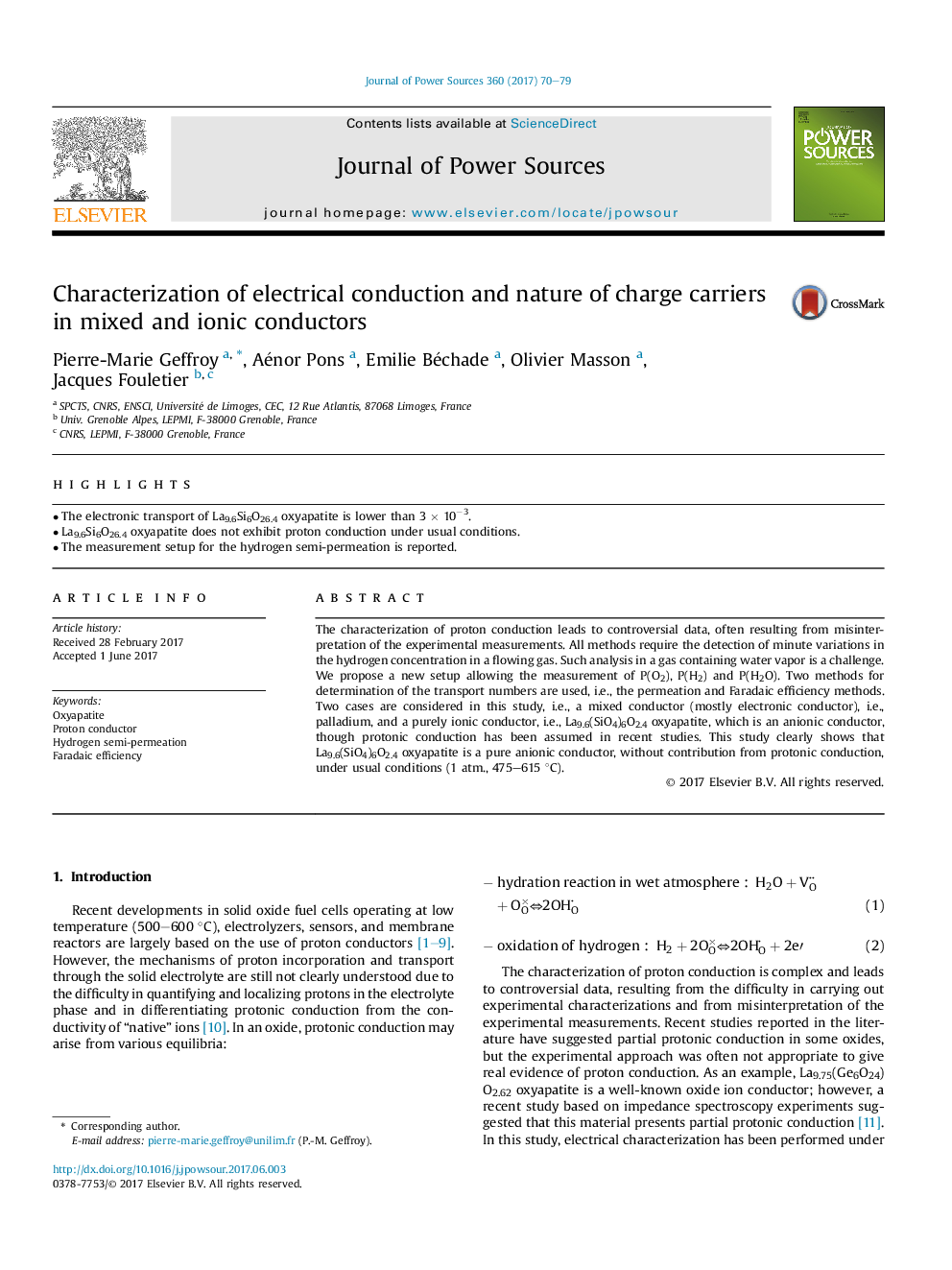| Article ID | Journal | Published Year | Pages | File Type |
|---|---|---|---|---|
| 5149006 | Journal of Power Sources | 2017 | 10 Pages |
Abstract
The characterization of proton conduction leads to controversial data, often resulting from misinterpretation of the experimental measurements. All methods require the detection of minute variations in the hydrogen concentration in a flowing gas. Such analysis in a gas containing water vapor is a challenge. We propose a new setup allowing the measurement of P(O2), P(H2) and P(H2O). Two methods for determination of the transport numbers are used, i.e., the permeation and Faradaic efficiency methods. Two cases are considered in this study, i.e., a mixed conductor (mostly electronic conductor), i.e., palladium, and a purely ionic conductor, i.e., La9.6(SiO4)6O2.4 oxyapatite, which is an anionic conductor, though protonic conduction has been assumed in recent studies. This study clearly shows that La9.6(SiO4)6O2.4 oxyapatite is a pure anionic conductor, without contribution from protonic conduction, under usual conditions (1 atm., 475-615 °C).
Related Topics
Physical Sciences and Engineering
Chemistry
Electrochemistry
Authors
Pierre-Marie Geffroy, Aénor Pons, Emilie Béchade, Olivier Masson, Jacques Fouletier,
